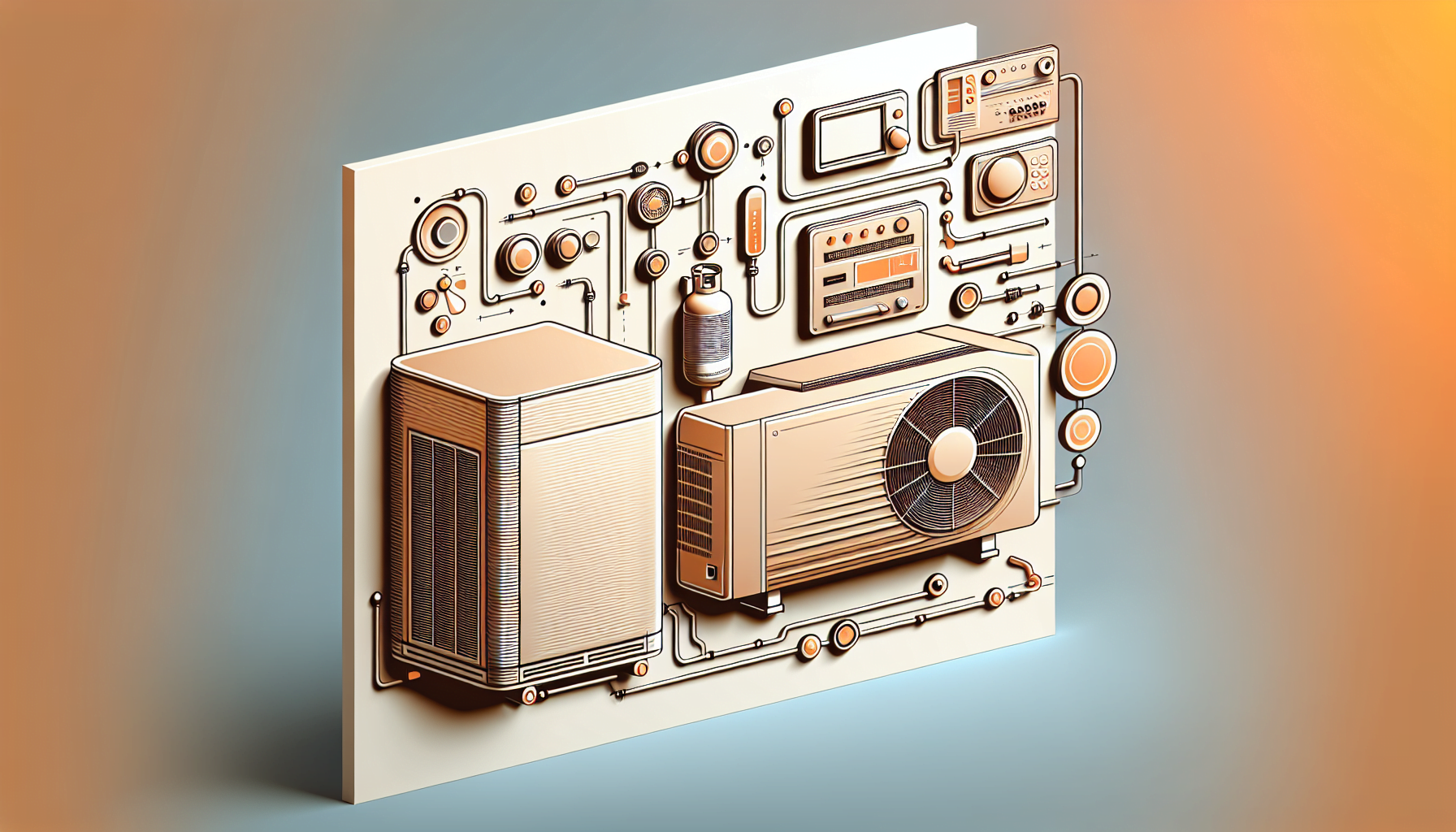Hybrid heat pumps with propane backup are the game-changers in sustainable home heating. They’re the unsung heroes when the mercury drops, seamlessly shifting from geothermal bliss to propane power without missing a beat. Imagine never having to worry about the bite of a cold front again.
That moment when you realize your green heating solution has a secret weapon against the winter’s chill? It’s a game-changer. It’s the peace of mind that comes from knowing you’re covered, no matter what Mother Nature throws your way.
Navigating the switch between eco-friendly and emergency heat can be tricky, but I’ve been there, and I’ve got the insights to make it simple. We’re about to dive into a world where comfort meets sustainability, and I’ll guide you through every step.

Why Choose a Hybrid Heat Pump with Propane Backup?

Efficiency in the Cold: A Hybrid Heat Pump’s Ace in the Hole
You’re eyeing a cozy winter without the chill, right? Imagine a system smart enough to switch gears when Jack Frost gets serious. That’s your hybrid heat pump with propane backup. When temperatures plummet, it flips to propane, ensuring your home stays toasty. It’s like having a reliable co-pilot that takes over when the going gets tough. This isn’t just about comfort; it’s about a system that adapts to keep efficiency at its peak, even when the weather does its worst.
Cost-Effectiveness: Saving Pennies While Saving the Planet
Let’s talk numbers. You want a system that’s kind to your wallet and the environment. During snowier months, the hybrid heat pump with propane backup is a financial superhero. It’s more energy-efficient than all-electric pumps or gas furnaces, meaning lower bills for you. And because it uses less electricity, it’s a greener choice. You’re not just heating your home; you’re making a statement about your values.
Mild Weather, Mild Energy Use: The Best of Both Worlds
You know those days when it’s chilly, but not ‘polar vortex’ cold? Your hybrid system has got you covered with a limited-capacity electric heating element. It’s like having a light jacket for those brisk fall days – just enough to keep you comfortable. This means even more savings and a smaller carbon footprint. It’s the kind of thoughtful design that makes you nod in appreciation.
Long-Term Investment: Think Big Picture
You’re not just buying a heating system; you’re investing in your home’s future. A hybrid heat pump with propane backup adds value to your property. It’s a feature that speaks to Chester County homeowners or anyone in similar climates who wants a sustainable, cost-effective heating solution. It’s about looking ahead and knowing you’ve made a smart choice for years to come.
Space and Maintenance: Practical Considerations
Before you dive in, let’s get practical. You’ll need space for the propane tank, and yes, there will be maintenance. But don’t let that deter you. Think of it as a garden you tend to – a bit of effort for a bounty of warmth. And when it comes to repairs, Therefore that a well-maintained system is a long-lasting one. It’s about being proactive, not reactive.
How to Properly Size and Install Your Dual Fuel Heat Pump System?

Understanding Dual Fuel Heat Pump Systems
You’re considering a dual fuel heat pump system with a propane backup, and you want to make the right choice. This isn’t just about staying warm; it’s about making a smart, eco-friendly decision. A dual fuel system combines the efficiency of a heat pump with the power of propane heating, ensuring you stay comfortable no matter the weather.
Sizing Your System: The First Step to Efficiency
To run efficiently, your heat pump system must be the right size. Too small, and it’ll run constantly, struggling to keep up. Too large, and it’ll cycle on and off too often, wasting energy. You need a professional to calculate the heating and cooling capacity required for your specific climate and home size. They’ll consider insulation, window types, and even ceiling heights to determine the perfect fit.
The Economic Balance Point: Where Savings Meet Comfort
The economic balance point is critical in a dual fuel system. It’s the outdoor temperature at which it’s more cost-effective to switch from the heat pump to propane heating. Understanding this point means you can set your system to automatically switch to the most efficient mode for current conditions, optimizing your energy use and saving you money.
Energy Efficiency Ratings: Meeting the Standards
Your new system should meet the Department of Energy’s energy efficiency ratings. These ratings ensure you’re getting a system that not only saves you money but also reduces your carbon footprint. Look for a high Seasonal Energy Efficiency Ratio (SEER) for cooling and a high Heating Seasonal Performance Factor (HSPF) for heating.
Installation: The Path to Peak Performance
Installation is not a DIY job. It requires a professional who can handle the complexities of a dual fuel system. Whether you’re going for a packaged unit or a split system, the installation process will involve careful planning, precise measurements, and expert knowledge of electrical and ductwork systems. A professional assessment is key to optimal energy cost savings and comfort control.



